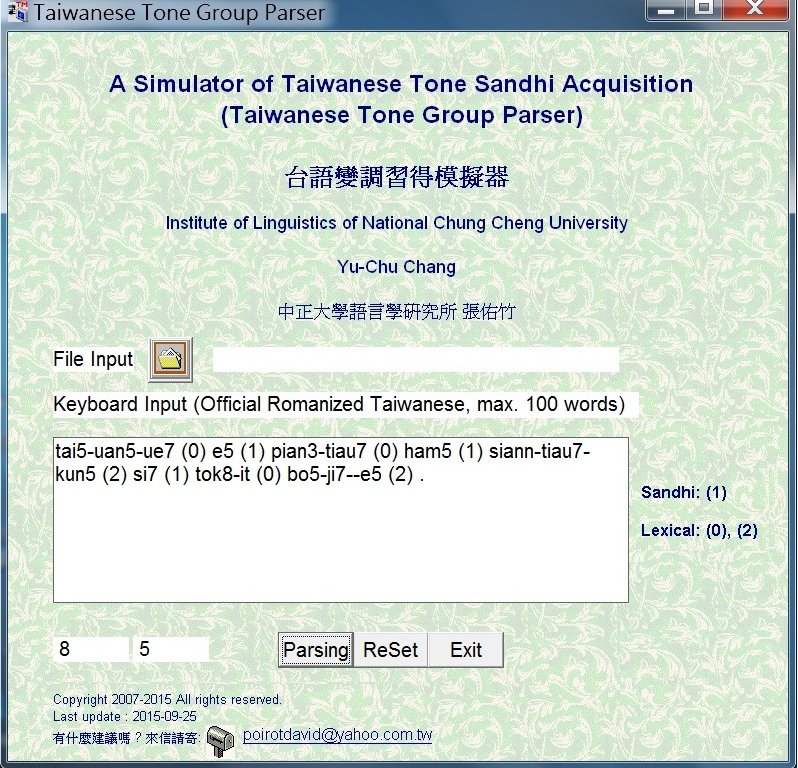[Click here for Chinese Version]

An Introduction to the Taiwanese Tone Group Parser

This website is sponsored
by VIKON Corp.
Copyright July 1996.
All rights reserved.
Last update : 2022-06-24
Any comments? mail to:
 poirotdavid@yahoo.com.tw.
poirotdavid@yahoo.com.tw.